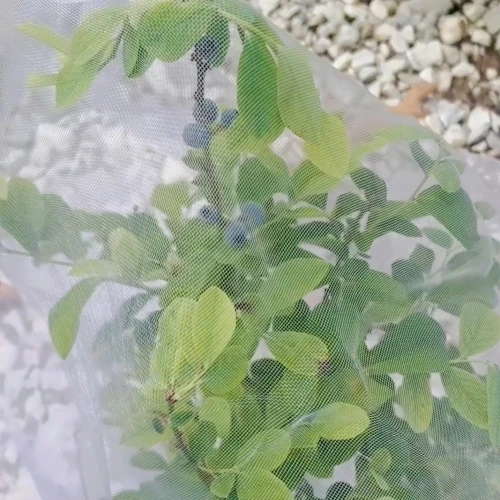-
 Afrikaans
Afrikaans -
 Albanian
Albanian -
 Amharic
Amharic -
 Arabic
Arabic -
 Armenian
Armenian -
 Azerbaijani
Azerbaijani -
 Basque
Basque -
 Belarusian
Belarusian -
 Bengali
Bengali -
 Bosnian
Bosnian -
 Bulgarian
Bulgarian -
 Catalan
Catalan -
 Cebuano
Cebuano -
 China
China -
 Corsican
Corsican -
 Croatian
Croatian -
 Czech
Czech -
 Danish
Danish -
 Dutch
Dutch -
 English
English -
 Esperanto
Esperanto -
 Estonian
Estonian -
 Finnish
Finnish -
 French
French -
 Frisian
Frisian -
 Galician
Galician -
 Georgian
Georgian -
 German
German -
 Greek
Greek -
 Gujarati
Gujarati -
 Haitian Creole
Haitian Creole -
 hausa
hausa -
 hawaiian
hawaiian -
 Hebrew
Hebrew -
 Hindi
Hindi -
 Miao
Miao -
 Hungarian
Hungarian -
 Icelandic
Icelandic -
 igbo
igbo -
 Indonesian
Indonesian -
 irish
irish -
 Italian
Italian -
 Japanese
Japanese -
 Javanese
Javanese -
 Kannada
Kannada -
 kazakh
kazakh -
 Khmer
Khmer -
 Rwandese
Rwandese -
 Korean
Korean -
 Kurdish
Kurdish -
 Kyrgyz
Kyrgyz -
 Lao
Lao -
 Latin
Latin -
 Latvian
Latvian -
 Lithuanian
Lithuanian -
 Luxembourgish
Luxembourgish -
 Macedonian
Macedonian -
 Malgashi
Malgashi -
 Malay
Malay -
 Malayalam
Malayalam -
 Maltese
Maltese -
 Maori
Maori -
 Marathi
Marathi -
 Mongolian
Mongolian -
 Myanmar
Myanmar -
 Nepali
Nepali -
 Norwegian
Norwegian -
 Norwegian
Norwegian -
 Occitan
Occitan -
 Pashto
Pashto -
 Persian
Persian -
 Polish
Polish -
 Portuguese
Portuguese -
 Punjabi
Punjabi -
 Romanian
Romanian -
 Russian
Russian -
 Samoan
Samoan -
 Scottish Gaelic
Scottish Gaelic -
 Serbian
Serbian -
 Sesotho
Sesotho -
 Shona
Shona -
 Sindhi
Sindhi -
 Sinhala
Sinhala -
 Slovak
Slovak -
 Slovenian
Slovenian -
 Somali
Somali -
 Spanish
Spanish -
 Sundanese
Sundanese -
 Swahili
Swahili -
 Swedish
Swedish -
 Tagalog
Tagalog -
 Tajik
Tajik -
 Tamil
Tamil -
 Tatar
Tatar -
 Telugu
Telugu -
 Thai
Thai -
 Turkish
Turkish -
 Turkmen
Turkmen -
 Ukrainian
Ukrainian -
 Urdu
Urdu -
 Uighur
Uighur -
 Uzbek
Uzbek -
 Vietnamese
Vietnamese -
 Welsh
Welsh -
 Bantu
Bantu -
 Yiddish
Yiddish -
 Yoruba
Yoruba -
 Zulu
Zulu
Exploring the Benefits and Applications of Polypropylene Sacks in Various Industries
The Versatility and Benefits of Polypropylene Sacks
Polypropylene sacks, also known as woven polypropylene bags, have become increasingly popular across various industries due to their remarkable versatility and durability. Made from a thermoplastic polymer, polypropylene, these sacks are designed to meet diverse packaging needs while also being environmentally friendly.
One of the most significant advantages of polypropylene sacks is their exceptional strength. They can hold substantial amounts of weight, making them ideal for packaging materials like grains, fertilizers, seeds, and even construction materials. The woven structure of these sacks provides added resistance to tearing and splitting, ensuring that the contents remain secure during transport and storage. This toughness is particularly beneficial in industries such as agriculture and construction, where durability is essential.
Besides their strength, polypropylene sacks are also lightweight. This characteristic allows for easier handling and transportation, reducing shipping costs and making them a preferred choice for many businesses. Unlike traditional paper or jute bags, polypropylene sacks don’t contribute significantly to the overall weight, which is an important consideration for companies looking to optimize their logistics.
Another significant benefit of polypropylene sacks is their resistance to moisture. These bags do not absorb water like other materials, keeping the contents dry and protected in varying climatic conditions. This moisture resistance is crucial for products like grains and food items, which can spoil if exposed to dampness. Furthermore, polypropylene sacks can be treated or coated with UV stabilizers, enhancing their durability when exposed to sunlight and outdoor elements.
polypropylene sacks

In addition to their practical applications, polypropylene sacks are also customizable
. Businesses can easily print logos, branding information, and other designs on these bags, facilitating brand recognition and marketing efforts. This adaptability makes them an excellent choice for not only functional packaging but also for promotional purposes. Companies in the agricultural sector, for example, can use these printed sacks to make a lasting impression while simultaneously promoting their products.Recycling and sustainability are becoming increasingly important in today’s market, and polypropylene sacks score well on this front as well. While they are durable and have long lifespans, they can also be recycled at the end of their use. Many consumers are now looking to support businesses that demonstrate environmental responsibility, and the use of recyclable materials can significantly enhance a company's image. This aligns with the growing trend of sustainability, making polypropylene sacks an attractive option for eco-conscious businesses.
From an economic standpoint, polypropylene sacks are cost-effective. Compared to other types of packaging, such as paper or jute, polypropylene sacks often come at a lower manufacturing cost while providing superior protection and durability. This cost-effective nature allows businesses to save money in both production and shipping, making polypropylene sacks a financially sound investment.
The growing demand for polypropylene sacks can also be attributed to their wide range of applications. Beyond agriculture and construction, they are commonly used for packaging pet food, concrete mix, fertilizers, and even various industrial products. The ability to cater to different sectors speaks volumes about their adaptability and reliability.
In conclusion, polypropylene sacks are a practical solution for a variety of packaging needs. With their durability, lightweight nature, moisture resistance, customization options, and recyclability, it is no wonder that they have found a niche in numerous industries. As businesses strive for efficiency and sustainability, polypropylene sacks provide a compelling option that aligns with modern market demands. Their versatility ensures that whether in agriculture, construction, or any other sector, these sacks will continue to play an essential role in packaging solutions for years to come.
-
Shipping Plastic Bags for Every NeedNewsJul.24,2025
-
Safety Netting: Your Shield in ConstructionNewsJul.24,2025
-
Plastic Mesh Netting for Everyday UseNewsJul.24,2025
-
Nylon Netting for Every UseNewsJul.24,2025
-
Mesh Breeder Box for Fish TanksNewsJul.24,2025
-
Expanded Steel Mesh Offers Durable VersatilityNewsJul.24,2025











